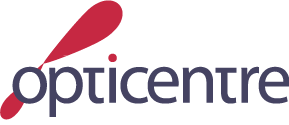working with explorer?
Explorer allows you to manipulate and work with assets and folders. Explorer is where you add folders and assets, where you can scope assets, and where you create projects. In addition, if you need to edit, translate, or export an asset without creating workflow and a project, you can do so in Explorer.
NOTE: To refresh the view of your assets without refreshing the entire page, right-click the folder on the left and choose "Refresh".
Searching for Assets
You can search for assets in Explorer by selecting a particular mount or folder and specifying the text to search for (optionally case-sensitive). The search returns a link to each asset that contains the search string.
A search within an XML repository mount provides additional options and search and replace capability.
Selecting Assets
You can select one or more assets from the same folder by Shift- or Ctrlclicking the assets to select. To select assets from multiple folders, select the assets from the first folder as usual, and right-click the selection and choose "Remember Selection". The selection appears in the Current Selection window. You can then navigate to another folder, and do the same. Once you have all the necessary assets selected, you can choose an action.
Editing and Translating Assets
You can edit and translate source and target assets in Explorer. When you select a source asset or an asset that is not linked, the Freeform Editor opens. When you select a linked target asset, the Translation Workbench opens. The Segmented Assed Editor, the Freeform Editor, and the Translation Workbench function in the same way as when accessed from the task list.
In addition, you can use the Launcher to edit assets externally, in their native application. Using the Launcher requires some installation and configuration steps. See the WorldServer online help for details about installing, configuring, and using the Launcher.
Submitting Assets
You can submit content that you have created or edited for approval from Explorer. This creates a project using the default workflow.
Exporting and Importing Assets
You can export assets to work with them offline in the Translation Workbench for Windows or an outside CAT tool. When you export an asset, the corresponding target asset is locked automatically (whether it already exists or not). The translation memory is exported with it. After translating the asset offline, you import it back into WorldServer.
When you import an asset, WorldServer checks if the asset is still locked by you. If the asset is no longer locked by you, WorldServer will not import it, since there may have been changes made to it. The source and target segments of the translated document populate the translation memory if you select that option upon import. The translation memory from the offline tool does not get imported into WorldServer translation memory, since the offline translation memory may contain irrelevant or incorrect matches. However, you can import offline translation memory (TMX format) into a WorldServer translation memory.
Locking and Unlocking Assets
You can lock assets or folders that you do not want other users to modify. Assets are automatically locked when you save changes in the Translation Workbench or Freeform Editor or when you export.
Conversely, you can unlock assets to allow other users to modify them. Assets are automatically unlocked upon import or task completion.
Accessing the Viewer
The Viewer allows you to see assets from Explorer. This is helpful while you are working on an asset and want to see a preview. With certain file types, you can also edit the asset from the Viewer. You can access the Viewer by selecting an asset and clicking "View" or through the Translation Workbench or Freeform Editor.
Manipulating Assets
You can add, delete, copy, download, or upload assets as needed from Explorer. Adding and copying folders allows you to set up target folders directly in WorldServer. Downloading and uploading assets allows you to bring assets into WorldServer for globalization, and to take assets from
WorldServer once they have been globalized.
Working with ClearCase
The ClearCase connector requires that you have a special license from Idiom. Once you obtain a ClearCase license key, navigate to Management > Administration > Licenses and add the ClearCase license key provided by Idiom Professional Services.
When you have a ClearCase mount configured, you have access to multiple ClearCase commands from within the Explorer.
Comparing Versions
You can compare versions of XML documents in Explorer. This feature allows you to compare one version of an asset stored in the XML repository against another version of the same asset. You can choose to view the XML data of the versions or an in-context change-tracking PDF document.
Scoping Assets
You can determine how many words are in a particular folder or asset, and how much translation will cost, based on a selected cost model.
NOTE: You need to set up a cost model (Management > Linguistic Tool Setup > Cost Model Setup) and locales (Management > Business Rule Linkage > Locales) before using the scoping tool.
To scope assets, select the assets and choose Projects > Scope.
Generating Publishing Output
You can generate final output for content (for example, a PDF manual or a compiled help system). You must have Publishing Output configured in Management > Administration > ustomization.
Creating Projects
You create projects in Explorer after you have set up the following:
- Content connection
- Content association with locales
- Linkage
- Users
- Workflow
Adding to a Project
You can add new assets to an existing project. The assets that you add need to have proper linkage configured. Once the assets are added to the project, they will become new tasks that will start at the first step of the designated workflow.
Comments
 English
English


 Bulgarian
Bulgarian